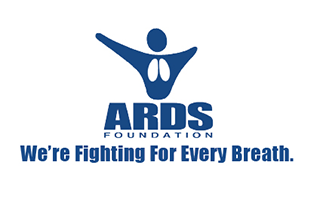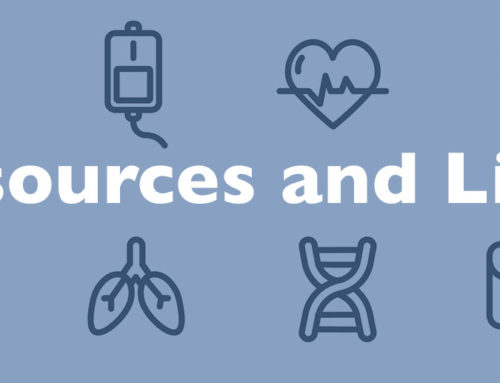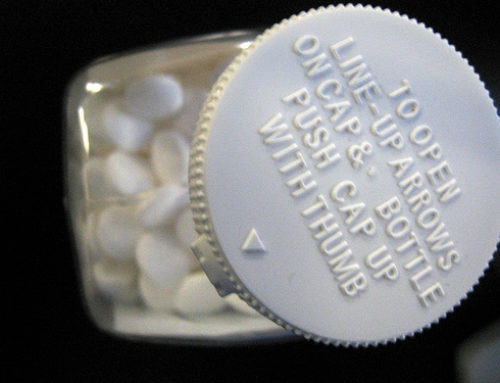Articles reprinted with permission from ADVANCE for Managers of Respiratory Care
- Researchers Need to Study ARDS Survivors After They Leave the ICU
By Michael Gibbons - Healing Emotional Scars
By Francie Scott - A Survivor’s Story
By Michael Gibbons - A Tale of Triumph
Mike Bederka
Researchers Need to Study ARDS Survivors After They Leave the ICU
By Michael Gibbons
Survivors of acute respiratory distress syndrome are like the old soldiers in Gen. Douglas MacArthur’s famous quote: They just fade away. After ARDS patients win the battle for their lives in ICUs, stabilize and exit hospitals’ doors, they’re no longer subject to the same intense clinical scrutiny.
Too few of these veterans of critical illness are asked how they feel and what they think two, four, 10 or more years after their ordeals. But their self-assessments, insights and observations could help physicians take the full measure of ARDS. Such knowledge could help new ARDS patients cope emotionally with the lingering deficits that will alter their lives forever.
When ARDS survivors were asked recently what bothered them during the late phases of recovery, they cited severe sleep disruptions, hallucinations, depression, disturbing dreams and memories about the ICU, persistent memory lapses, cognitive difficulties, anger and guilt over what they put their families through, and dismay over personality differences and changes to their voices. Many survivors were surprised at how long it took them to recover and complained of not having enough information about what they had gone through. 1
QUALITY OF LIFE
For instance, studies of bronchoalveolar lavage fluid in ARDS survivors suggest that intervening in the inflammatory process during the acute phase not only improves patients’ immediate survival but also their long-term physiologic measures, such as forced vital capacity (FVC).
Positive changes in FVC and other measures can affect patients’ quality of life, the metric that matters most to patients. “People, to some extent, are willing to trade quantity of life for quality if their quality of life is very poor,” said Dr. Curtis of Seattle’s Harborview Medical Center.
As with other measures, quality of life in the years following the acute phase of ARDS and acute lung injury (ALI), a secondary complication of ARDS, remains largely unexplored. “We don’t have much knowledge of the causal pathways toward decreased health-related quality of life and decreased mental health status after acute lung injury,” observed Craig Weinert, MD, another ATS speaker. “Until we firm up these causal pathways, we’ll have a hard time answering the question: How long do the effects of ALI persist?”
A number of tools exist that can take objective measurements of health-related quality of life (HRQL) in ARDS survivors, explained Kenneth Steinberg, MD, an associate professor of medicine, also at Harborview.
Most are generic, such as the sickness impact profile, the Short Form-36, the perceived quality of life scale, the Center for Epidemiologic Studies depression score and the post-traumatic stress syndrome score. A few are respiratory specific, such as the St. George Respiratory Quotient (SGRQ) and the Chronic Respiratory Questionnaire (CRQ).
According to data from ARDS patients who have taken these questionnaires, HRQL is impaired initially after the acute phase but improves over time, with the most dramatic improvements occurring three to six months after extubation, Dr. Steinberg said. Patients under age 40 continued to improve after six months in self-reported health status reports, unlike those on the other side of 40.
“HRQL and functional status are severely affected by ARDS but improve over time, and the improvement after a year is variable,” Dr. Steinberg observed. “We must identify risk factors that lead to abnormal HRQL, then develop interventions to minimize these long-term adverse outcomes ARDS patients are reporting. Clinical trials now need to include HRQL and other outcomes, and we need to have information to provide to patients.”
DISPARITY
Dr. Steinberg also noted a curious phenomenon: Patients’ perceptions of their HRQL “don’t always correlate with objective measures of health outcome.” Apparently, a spirometer can measure the capacity of a lung but not the capacity of a patient to endure suffering.
In a study published in 1988, Donald Patrick, PhD, MSPH, et al. examined 69 ICU survivors over age 65 who all had relatively short ICU stays. He administered to each patient the perceived quality of life test scale as well as the sickness impact profile. “Some patients with severe dysfunction on the sickness impact profiles nevertheless had very high satisfaction levels with their lives and vice versa,” Dr. Steinberg reported.2
Patrick et al. speculated that such patients either rationalize about their decreased functional status or else adjust to lower levels of health. “These results suggest that failure to return to pre-admission functional status may not diminish patient satisfaction with their lives or their willingness to undergo the ICU experience again,” Dr. Steinberg said. “Most seem to adapt to their lower level of functionality.”
Consider, for instance, the remarkable emotional resilience displayed by someone near and dear to Dr. Steinberg — his aunt. Some years after undergoing a splenectomy, she developed pneumococcal sepsis, ARDS, renal failure and wound up as a quad amputee due to disseminated intravascular coagulation.
“She would score pretty poorly, I think, on a lot of our health-related quality of life scores,” he said. “But she is thrilled to be alive and to see multiple members of her family get married, have kids and graduate.”
On the other hand, many who survive ARDS perceive themselves as much sicker than warranted by the relatively mild abnormalities in vital capacity they sustain, according to Dr. Weinert. True, these patients suffer diminished exercise capacity due to neuromuscular weakness in their peripheral muscles. That’s enough to torpedo their self-assessment of their physical function.
“It’s quite distressing to patients when they feel as weak as a wet noodle for months and months despite the fact that their doctors say their lungs are all fine,” Dr. Weinert pointed out.
Dr. Steinberg concluded: “This disparate view that patients sometimes have about their own quality of life and what we measure with tests is something we need to struggle with.”
ARDS AND COGNITION
ARDS survivors must not only recoup their physical stamina, they have to clear away the mental cobwebs as well.
Ramona Hopkins, PhD, of the department of critical care medicine at LDS Hospital in Salt Lake City, Utah, studied cognition in ARDS patients from 1994 to 1999 using standardized tests and questionnaires. Every patient she followed had some cognitive impairment at discharge and most still struggled with problems of memory, attention and other thought processes a year later.3
Dr. Hopkins originally enrolled 116 ARDS patients on mechanical ventilation with PaO2/FiO2 < or equal to 150 mmHg. Of these, 42 died within a year while undergoing ICU treatment. Of the remaining 74 (33 men and 41 women), three died before the one-year follow-up. Four others declined to participate in cognitive testing.
The patients averaged 46 years of age with a few over age 60. They averaged 28 days in the ICU.
Dr. Hopkins’ team tested depression/anxiety, IQ, memory, attention, synaptic processing speed, and the ability to think, organize and solve problems that is known, collectively, as the brain’s “executive” function.
Most patients (61 percent) still had cognitive impairment a year after discharge in at least one area. Processing speed was the most commonly impaired area, followed by memory, executive function, attention span and IQ. Fifteen percent of the patients showed more pronounced anxiety and depression.
Like mountain climbers who suffer altitude sickness, ARDS survivors incur cognitive deficits from low levels of tissue oxygen, Dr. Hopkins noted. Her team took more than 170,000 pulse oximetry measurements. These data showed a mean O2 sat. of < 90 percent for 114 hours per patient (a few as high as 700 hours); < 85 for 11 hours per patient and < 80 percent for 0.8 hours per patient.
Significant correlations emerged between decreased O2 sat. and attention, IQ, memory, executive function and processing speed. “The amount of time a patient was hypoxemic was associated with impaired cognitive performance,” Dr. Hopkins said. “Hypoxemia may explain why some patients had problems returning to work or problems performing work.”
She thinks inflammation and elevated cytokine levels also may correlate to cognitive deficits. Furthermore, CT scans of the brains of 15 ARDS patients (nine males) who spent longer than the usual 28 days in the ICU showed significant enlargement of the lateral ventricles. This finding indicates brain atrophy; as brain tissue dies, cerebral spinal fluid fills in the area, resulting in ventricular enlargement.
“I think (cognitive deficits in ARDS survivors) are really multifactorial, but there might be a number of factors we can look at for intervention to improve brain outcome,” she concluded.
ADVISING PATIENTS
Physicians can glean the results of existing ARDS research to advise patients of what to expect in the future, said Dr. Weinert of the University of Minnesota Medical Center in Minneapolis. First of all, if patients survive the acute phase and are off the ventilator for 30 days or so, “we can usually tell them they are unlikely to die at this point,” he said.
Pulmonary function diminishes after the acute phase of ARDS, then improves and stabilizes by six to 12 months post-extubation. Most patients have only mild dysfunction. They tend to show a marked decrease in activities of daily living that improves to near normal six months out or so, according to randomized trials of carefully selected patients with minimal amounts of co-morbid conditions.
Dr. Weinert recommended giving this advice to patients suffering ALI:
ALI shouldn’t shorten your life once you get off the ventilator, but what caused you to get ALI may. Your pulmonary function should improve during the next six months, but your respiratory symptoms and decreased exercise capacity may persist for years. And you may have problems thinking for a year or more that may cause job or relationship difficulties. You may have mood problems or distressful thoughts about your time in the ICU. If these are more than just mild, or if they persist, you may need to have them evaluated and seek further help.
Michael Gibbons is senior associate editor of ADVANCE.
For a list of references please call Michael Gibbons at (610) 278-1400, ext. 1167.
Healing Emotional Scars
By Francie Scott
Surviving acute respiratory distress syndrome is like surviving a war, except the battle zone is inside one’s chest. It should come as no surprise that many of these patients suffer persistent psychological aftereffects years after discharge, like war veterans. Even so, researchers in Munich were not prepared for what they found.
These investigators selected 80 patients who had severe ARDS and were admitted to a tertiary care university hospital between 1985 and 1995. Many of them had been on extracorporeal membrane oxygenation. Researchers interviewed them an average of four years afterward. They asked them whether they had any traumatic recall of dyspnea, pain, anxiety or nightmares and screened them for post-traumatic stress disorder (PTSD).
Fully a quarter of these patients met the criteria for PTSD. To put that figure in context, only 1.3 percent of United Nations peacekeeping soldiers who had served one year on the Thai-Cambodian border meet the same criteria, according to the researchers.1
“That was very striking to me to think that my care of an ARDS patient was more traumatic for that patient than sending him to live for a year on the Thai-Cambodian border trying to keep the Khmer Rouge at bay,” observed Derek C. Angus, MBCHb. “I thought I was a nicer guy than Pol Pot, but maybe not.”
Acknowledging “a lot of miserableness going on in our survivors,” the intensivist from the University of Pittsburgh Medical Center suggested, “This could be an astounding opportunity to improve care.”
RECOGNIZING PTSD
People who were diagnosed with a life-threatening illness or have undergone invasive medical procedures are among those listed at risk for developing PTSD, according to the PTSD Alliance, a group of professional and advocacy organizations dedicated to increasing awareness and promoting better understanding of the condition. Other listed risk factors include rape, domestic violence and catastrophic events, such as plane crashes and terrorist acts.
The group estimates that 5 percent of all Americans (more than 13 million people) have PTSD at any time. About 8 percent of all adults, or one in 13 people, will develop the disorder during their lifetime.
Rachel Yehuda, PhD, director of the PTSD program at the Bronx Veterans Administration Medical Center in New York, described the condition as a “wiring of the brain that doesn’t permit the normal recovery process.” People suffering from PTSD “cannot get rid of the memory of the event or the emotional response” that triggered the disorder. They relive the event through flashbacks and recurring nightmares. They avoid reminders of it and constantly feel hyper-aroused. This obsession prevents them from sleeping well and soon takes a toll on their self-esteem and personal relationships.
Dr. Yehuda distinguished between a disorder and a syndrome, noting that people suffering from post-traumatic stress syndrome will process their memories over time, while those with the disorder present with clinically significant symptoms that erode their ability to live functional lives. Recommended treatment for people who present with PTSD symptoms include psychotherapy and antidepressant medication.
The critical care risk factor could be reduced if clinicians assessed patients for PTSD and taught them how to monitor themselves, Dr. Yehuda suggested. Members of the PTSD Alliance recently prepared a booklet to help caregivers recognize patients who present with symptoms.
ADDING EMOTIONAL SUPPORT
Dr. Angus acknowledged that “many of us don’t systematically follow ICU survivors in follow-up clinics, and maybe we should.” He suggested adding emotional support from psychiatrists and rehab programs as strategies for helping patients recover from their ICU experience.
Tony Liscott, RRT, a team leader in the cardiothoracic ICU at the University of Pittsburgh who works with Dr. Angus, recalled times when long-term acute patients have shown signs of psychosis and even dementia, especially those who don’t have a room with a window. “Patients don’t know whether it is night or day,” he explained.
Staff members try to move patients to a window room when they notice a patient showing signs of distress, and Liscott noted the psychosis resolves quickly. He also recalled the benefits of an excursion for a lung transplant patient who had been in the ICU several months. A nurse and a therapist took the young woman to a glass-covered bridge linking two hospitals where she could see a section of the city complete with traffic and pedestrians.
“Her whole attitude improved,” Liscott said. “There was no medical intervention, just stimulation.”
Liscott expects the coming and going of different caregivers also proves disorienting to patients. “It has to be traumatic, having different people take care of you every day,” he said. “Everyone has different personalities.”
Fixing such problems to provide a more user-friendly care system challenges members of the ICU staff, where they carry a heavy patient load due to chronic understaffing. Therapists in the cardiothoracic unit may have as many as 10 patients under their care, making it difficult to leave the unit to accompany a patient to other areas of the hospital.
While Liscott acknowledged that excursions for ICU patients should occur more often, he explained, “Time constraints don’t allow it.”
References
1. Schelling G, Stoll C, Haller M, et al. Health-related quality of life and post-traumatic stress disorder in survivors of the acute respiratory distress syndrome. Crit Care Med. 1998;26:651-59.
Editor’s Note: Post-tramautic Stress Disorder: A Guide for the Frontline is available from the PTSD Alliance at 1-877-507-PTSD or www.PTSDAlliance.org.
This article appears posthumously. Francie Scott was senior editor of ADVANCE.
A Survivor’s Story
By Michael Gibbons
What Bob Berendt called “the whole mess” began in July of 1997. He thought he had the flu.
Berendt, 43, had just moved to Grand Rapids, Mich., from Florida. Watching TV one night, he “went totally delirious.” He had a 105-degree temperature. His girlfriend, now wife, Monica, called 911. ER physicians at Blodgett Memorial Hospital in Grand Rapids diagnosed a perforated ulcer.
While en route to get a CT scan, Berendt went into respiratory failure. “They couldn’t figure out why,” he said. “They gave me less than a 5-percent chance of surviving the night.”
Physicians at Blodgett contacted the extracorporeal membrane oxygenation (ECMO) unit at the University of Michigan Medical Center in Ann Arbor. Personnel from that unit flew to Grand Rapids and hooked the now-comatose Berendt to a portable ECMO device. They wrapped him in aluminum foil to keep him warm and flew him to the medical center, where he came under the care of Robert Bartlett, MD.
Berendt was in desperate straits. He was placed in a drug-induced coma and paralyzed so he wouldn’t use muscles and absorb oxygen. He remained on ECMO, the modality of last resort. He was also on mechanical ventilation at six breaths per minute to keep his lungs moving so they wouldn’t harden. As if that wasn’t enough, he had to be placed on dialysis, too: His liver and kidneys had failed.
“They did some trial periods off ECMO,” he recalled, “and just the movement of my tongue alone dropped my oxygen level so low they had to put me right back on it.”
The ECMO unit breathed for Berendt for a full 10 days. It saved his life. “What an incredible piece of technology that is,” he marveled.
While on ECMO he had 17 IV lines giving him antibiotics. By systematically running cultures on him and by questioning his girlfriend about their recent whereabouts, clinicians gradually weaned him off each antibiotic, one at a time, until they located what they thought was the problem.
“They determined it was diverticulitis that started the whole mess, but they’re not 100 percent sure,” he said. “The diverticulitis caused septic shock. That’s why I went into respiratory failure.”
Berendt remained ventilated another three or four weeks after ECMO. Altogether, he was hospitalized from July to the end of September.
AFTER EFFECTS
By the end of his ordeal, Berendt had lost 80 pounds. He had little muscle mass left; he said he was just “skin hanging off bone.” When the medical center’s rehab program proved too strenuous for him, he went for rehab at a local nursing home.
Today, living at home on disability, he said he has “bounced back fairly well, better than most.” He has no lung scarring or other pulmonary damage, although his lung capacity is 60 percent of normal. He has no sense of balance because one of the antibiotics he received produced a side effect called vestibular toxicity that killed the hair cells lining both inner ears. “It’s gotten a lot better over the last four years. My brain has compensated,” he said.
In addition, Berendt’s entire spine is fused from a rare form of arthritis called ankylosing spondilitis, so he can’t turn his head. Still, he can drive, mow his yard and walk short distances for exercise.
Berendt said he has sustained “definite and permanent” cognitive losses. “I can tell, and my wife can, too,” he said. “I was very quick before all this. Now I’ll leave out half a sentence when I type out an e-mail and say words I didn’t mean to say. I have quite a bit of memory problems.” He gave up a job as a 911 operator in Lake County, Mich., because “I was afraid I would get somebody killed,” he said.
Any emotional scarring seems to have evaporated, though. Some patients come off ECMO with a complete 180-degree turnaround in personality, Dr. Bartlett told him. Berendt suffered no such post-traumatic symptoms although he did have nightmares while hospitalized.
He doesn’t remember if the ICU environment was noisy or stressful, a common complaint of many ARDS survivors looking back. “I was so doped up on morphine I didn’t care what happened,” he said. “One time I could have sworn someone was sneaking in and popping open a can of beer. They were actually replenishing my feeding bag.”
MOOD SWINGS
As for depression, Berendt said he became morose when he first showed up for rehab. “Why even try to get through this?” he asked himself. Before long, signs of physical improvement put him in a better frame of mind. His mood sunk again after rehab when he settled into home life, confined to a wheelchair temporarily, confronted with great chunks of idle time. Nevertheless, a single, highly productive visit to a psychologist, he insisted, adjusted his attitude toward the glass-half-full outlook of his former life.
Now, after discovering a network for ARDS survivors called the Ards Support Center and becoming its secretary, Berendt’s emotional up-and-down ride has smoothed out.
“For the longest time, I tried to figure out why I had survived this whole mess when kids die on ECMO all the time,” he said. “Then I found the ARDS network. I look at life in a whole different way now. I appreciate it more. I take time to look at the little stuff.”
At the nursing home, he recalled watching a 20-year-old man play accordion in the cafeteria to an appreciative audience of elderly folk. “He was giving his time to bring some life to these older people,” Berendt said. “I was just amazed at how a half-hour of that made those people’s weeks. That’s what I notice now.”
Michael Gibbons is senior associate editor of ADVANCE.
A Tale of Triumph
Every time Joe Saggese goes back to the University of Pennsylvania Medical Center, the nurses shake their heads in awe when they see him. The 47-year-old spent a harrowing four months in the medical intensive care unit from December 1998 to April 1999, battling acute respiratory distress syndrome.
“My doctors tell me my case is so far worse than any they’ve seen before or since,” said the Washington Township, N.J., resident. “Much of that time I was in a medically induced coma.”
The contents of Saggese’s perforated stomach ulcer resulted in a severe systemic infection, or sepsis. The condition was the probable cause of his ARDS.
“My family had been called and told my condition had worsened and it wasn’t likely that I would make it through the night,” he said. “I’m told that happened at least four times.”
After a long and painful hospital stay, Saggese finally returned to the comforts of home. He sees life in a whole new way since his release.
“I was a high performance financial executive, constantly under the stress of tight deadlines,” he said. “Those kinds of things aren’t important anymore. It’s a different world.”
Because of his restricted lung capacity, Saggese must lead a much more sedentary lifestyle now. He often sits at his computer, looking at the work of contemporary artists on the Internet.
He enjoys spending time with his wife and two children, who all stood firm by his side through the ordeal.
“Without the vigilance, love and outpouring of help from my family,” he said, “I would have never made it.”
—Mike Bederka






